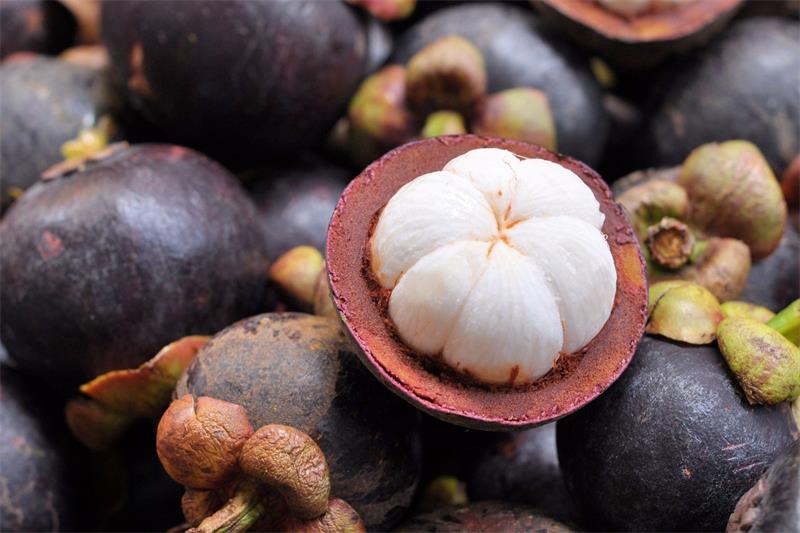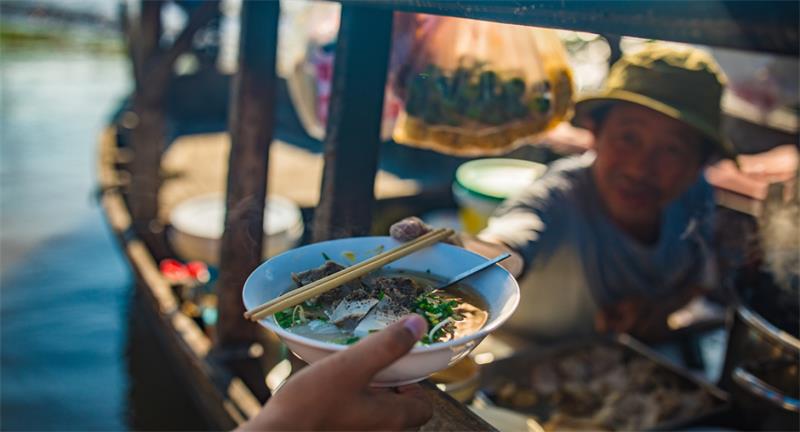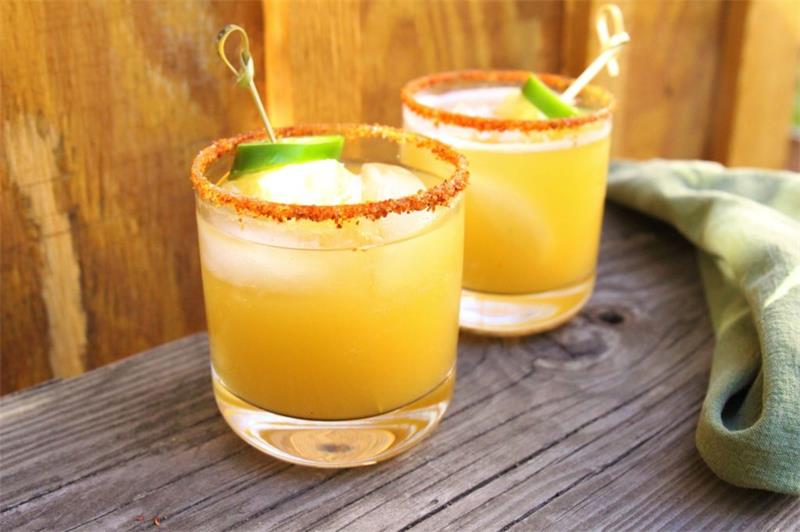Contents
The Most Exotic Fruits You Can Find in Southeast Asia
Introduction: A Fruit Haven Like No Other
Southeast Asia is a fruit lover’s paradise. With an abundance of tropical fruits available year-round, it’s no wonder that Southeast Asia is a popular destination for foodies and fruit enthusiasts alike.
From the spiky durian to the deliciously sweet mangosteen, the region boasts of an impressive range of fruits that are not commonly found elsewhere. A walk through any market or street corner in Southeast Asia will reveal an array of colorful and unique fruits on display, each with their own distinct flavor profiles and textures.
The region’s climate and fertile soil make it a perfect environment for growing a variety of exotic fruits all year round. Whether you’re looking for something sweet or savory, Southeast Asia has got you covered.
From creamy and rich jackfruit to tangy and refreshing dragonfruit, there’s something for everyone to try in this part of the world. In this article, we’ll take a closer look at some of the most exotic fruits that you can find in Southeast Asia, including their taste profiles, health benefits, cultural significance and how to eat them properly without making a mess!
Durian: The King of Fruits
Description and Taste Profile
Durian is a large, spiky fruit famous for its strong odor. While its smell may not be appealing to everyone, it has a loyal following in Southeast Asia where it is considered a delicacy. The fruit has a creamy texture and is often compared to custard or avocado.
Its flavor profile is complex and hard to describe – it’s sweet, savory, and slightly bitter all at the same time. One thing that sets durian apart from other fruits is its high fat content.
It’s also an excellent source of fiber, vitamin C, and potassium. Some people even consume the seeds after roasting or boiling them.
Cultural Significance in Southeast Asia
Durian’s cultural significance in Southeast Asia cannot be overstated – it’s often referred to as the “king of fruits.” In countries like Thailand, Malaysia, Indonesia, and Singapore, it’s commonly eaten fresh or used in desserts such as ice cream or custard. Beyond just being a food item, durian has also made its way into local folklore and traditions. In Indonesia for example, some people believe that consuming durian with alcohol can cause death due to the fruit’s warming properties.
Tips on How to Eat It Without Getting Overwhelmed by Its Pungent Smell
If you’re new to durian or are put off by its smell, there are a few tips that can help make the experience more enjoyable. Firstly, make sure you purchase durians that have split open naturally as this indicates ripeness.
Look for ones with sharp spikes which indicate freshness too. Another tip is to start with small pieces rather than taking large bites straight away – this will help your taste buds adjust gradually so you can appreciate its complex flavours better without being overwhelmed.
You can also try pairing it with other fruits such as mangosteen or coconut to balance out its strong flavour. Be prepared for the smell.
Some people describe it as similar to rotting onions or garbage! It is advisable not to eat durian in hotel rooms and public transportation in Southeast Asia because of the fruit’s pungent odor which some people find offensive.
Mangosteen: The Queen of Fruits
Appearance and Flavor Profile
If you’re searching for the perfect fruit that’s sweet, juicy, and delicious, mangosteen should be at the top of your list! This tropical fruit is small, round, and purple with a hard outer shell.
Inside, there are 4-8 white segments of luscious fruit, each with a mildly sweet flavor that is often described as a combination of strawberries and peaches. But let’s not forget about its unique texture!
Mangosteens have a soft, delicate texture that is unlike any other fruit. It’s almost like eating a cloud – light and refreshing.
Health Benefits
Aside from its delicious taste and appealing texture, mangosteens are also known for their incredible health benefits! These fruits are packed with antioxidants called xanthones which have been linked to reducing inflammation in the body. In addition to this, they are also high in vitamin C which can help boost your immune system.
Mangosteens have even been used in traditional medicine practices for centuries due to their potential anti-inflammatory properties. So not only do they taste good – they may help you feel good too!
How to Select and Prepare Mangosteens
When selecting mangosteens at the market or grocery store, look for fruits with firm skin that isn’t too soft or wrinkly. The darker purple color typically indicates ripeness as well. To prepare them at home, carefully slice around the circumference of the outer shell being careful not to pierce through the flesh inside.
Once it’s split open you can easily pop out each segment using your fingers or a small spoon. Mangosteens make great additions to smoothies or salads but are equally enjoyable on their own as an afternoon snack!
So what are you waiting for? Grab some mangosteens and taste the “queen of fruits” for yourself!
Rambutan: The Hairy Fruit
Physical Characteristics and Taste
Rambutan, also known as “hairy fruit,” gets its name from the spiky hairs that cover its skin. Despite its intimidating appearance, once you peel away the outer layer, you’ll be met with a sweet and juicy fruit with a slightly sour undertone. Its flavor is often compared to a grape but with a slightly firmer texture.
The fruit is roughly the size of a golf ball and has an oval shape. It has a single seed that’s about the size of an almond in the center.
The skin is bright red or yellow and covered in spikes. To eat it, you simply need to slice through the skin with a knife or your nails and pop out the white flesh inside.
Popular Uses in Southeast Asian Cuisine
In Southeast Asia, rambutan is commonly eaten fresh as a snack or added to desserts like fruit salad or smoothies. It’s also used as an ingredient in savory dishes like curries or stir-fries for some added sweetness. One popular way to enjoy rambutan is by dipping it into sugar or salt before eating it.
This enhances its natural flavors and gives it an extra crunch. Another unique way rambutan is enjoyed in Thailand is by making candied rambutans which are cooked in sugar syrup until they become soft and chewy.
Fun Facts About Its Name and Origin
The word “rambutan” comes from the Malay word “rambut,” which means hair. The name describes how this exotic fruit looks once it’s peeled open – like someone’s head full of hair!
The origin of rambutan can be traced back to Southeast Asia where it grows naturally in countries like Indonesia, Malaysia, Thailand, and Vietnam. It was first introduced to Hawaii in the late 19th century and eventually made its way to other tropical regions like Florida and Puerto Rico.
Some people believe that rambutan can help with various health issues due to its high antioxidants content. It’s also a good source of Vitamin C, iron, and fiber.
Dragonfruit: The Exotic Beauty
Appearance, texture, and flavor profile
Dragonfruit, also known as pitaya, is a brightly colored fruit with a unique appearance. It has a vibrant pink or yellow exterior with green scales that give it a dragon-like appearance.
Its interior is filled with small black seeds and white or pink flesh that has a sweet yet mild taste. The texture of dragonfruit is often compared to that of kiwi fruit due to its softness and crunchiness.
Nutritional value and health benefits
Not only is dragonfruit visually appealing, but it also packs an impressive nutritional punch. This exotic fruit is low in calories but high in fiber and antioxidants.
It contains vitamin C which helps boost immunity, iron which aids in red blood cell formation, and magnesium which promotes healthy bone structure. Consuming dragonfruit can also improve digestion due to its high fiber content.
This helps regulate bowel movements and prevents constipation. Additionally, the antioxidants found in this fruit can help prevent chronic diseases such as cancer and heart disease.
Creative ways to incorporate dragonfruit into meals
If you’re looking for creative ways to incorporate this exotic beauty into your meals, there are several options available! Dragonfruit can be sliced up fresh and added to smoothies or yogurt bowls for an extra pop of color.
It can also be used as a topping for salads or transformed into a salsa by combining it with diced tomatoes, jalapenos, onions, cilantro and lime juice. For those who enjoy something sweeter for dessert, try making dragonfruit sorbet or ice cream by blending together frozen dragonfruit chunks with coconut milk or cream.
Another fun idea is using the hollowed out skin of the fruit as a colorful serving dish for fruit salad or ceviche. Overall, dragonfruit offers both visual appeal and nutritional benefits, making it a fun and healthy addition to any diet.
Jackfruit: The Meaty Fruit
Texture, Flavor, and Versatility in Cooking
If you’re looking for a meaty vegan alternative, jackfruit might be just what you need. Jackfruit’s texture is fibrous and meat-like, making it a popular ingredient in many vegetarian or vegan dishes. Its flavor can be compared to that of a cross between pineapple and banana, with a slightly tart aftertaste.
Because of its neutral flavor profile, jackfruit can be used in both sweet and savory dishes. In Southeast Asia, where jackfruits are abundant, they are often used to make curries or stews since the fruit absorbs the flavors of the spices it is cooked with.
In Western kitchens, ripe jackfruit is often used as an ingredient for desserts like ice cream or cakes. It can also be prepared as a savory “pulled pork” substitute by cooking it until it falls apart into shreds.
Nutritional Value and Health Benefits
Jackfruit is packed with fiber and antioxidants that help boost digestive health and prevent inflammation. It is also high in several essential vitamins like vitamin C which supports immune function while promoting collagen production leading to healthier skin. The seeds of the jackfruit contain protein as well as healthy fats which provide energy for daily activities without adding too many calories to your meals.
Interesting Facts about Jackfruit’s History
Jackfruits have been cultivated for over 5 thousand years! It was first grown in India’s southwestern Ghats region but has since spread throughout other parts of Southeast Asia due to its popularity.
Historically, people have even used jackfruit as an emergency food source during times of drought or famine. Today, many people worldwide enjoy fresh or canned jackfruits for their delicious taste and versatility in recipes from smoothies to vegan pulled pork recipes!
Conclusion
Summary of the Unique Qualities of Each Fruit Mentioned Above
Southeast Asia is a treasure trove of unique and delicious fruits, each with its own distinct qualities. Durian, the “king of fruits,” may be an acquired taste due to its strong odor, but its rich and creamy flesh is unforgettable.
Mangosteen, on the other hand, is a queen among fruits for its delicate texture and sweet flavor. Rambutan’s spiky exterior may be intimidating at first glance, but once you bite into its juicy flesh, you’ll be hooked.
Dragonfruit’s vibrant exterior hides a mild yet refreshing taste that makes it perfect for smoothies or fruit salads. Last but not least, jackfruit’s meaty texture and versatility in cooking make it an excellent substitute for meat in vegan dishes.
A Call-to-Action for Readers to Try These Exotic Fruits for Themselves!
If you ever get the chance to visit Southeast Asia or your local Asian grocery store, don’t hesitate to try these exotic fruits! Not only are they delicious and nutritious, but they also offer a unique cultural experience that will broaden your horizons.
By trying new foods like these exotic fruits from Southeast Asia, we can expand our palate and gain a deeper understanding of different cultures around the world. So go ahead and take a bite out of durian – who knows?
You might love it! Or how about trying mangosteen as a refreshing summer snack?
Don’t forget to snap a photo with rambutan’s alien-like exterior before peeling away its spiky shell. And if you’re feeling adventurous in the kitchen, give jackfruit a try as a meat substitute in your next recipe.
I hope this article has inspired you to explore Southeast Asia’s incredible bounty of exotic fruits. Who knows what other culinary delights are waiting to be discovered?













